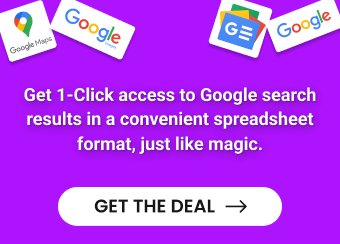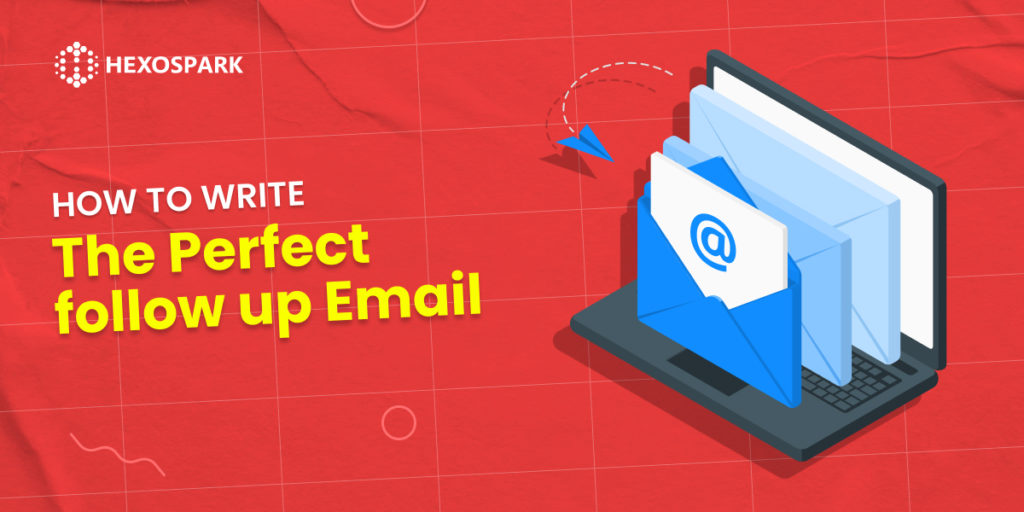It is estimated that only 2% of sales are made on the first contact.
You’re potentially losing 98% of your sales if you don’t follow up.
Don’t jump to the conclusion that your email isn’t interesting or that you won’t get noticed if you don’t get a reply from the first attempt.
The squeaky wheel gets the grease. So, the worst mistake you can make is completely ignoring the opportunity of using follow-up emails to nudge prospects towards your product or service and moving on to a new prospect.
A well-written follow-up email will help you be noticed and increase your chances to close the desired deal.
Well, writing a follow-up email is not an easy job as you want to be noticed on one side and not to seem pushy on the other. So, keeping the balance is what you need.
This is what we are going to speak about in this article.
Let’s start from the beginning.
What is a follow-up email?
A follow-up email is the sequence of emails one sends to a recipient after already contacted them before.
There are a number of reasons for sending follow-up emails, including:
👉 Reminding of the previously sent email.
👉 Requesting information.
How to Craft an Effective Follow-up Email
How you word your follow-up email is what matters, so let’s get into the details of how to craft a perfect follow-up email.
💌 Structure Your Email
First and foremost, your email should have a clear structure:
- The subject line
- Greeting
- Main body
- Closing/Call to action
- Signature.
Give the subject line more attention than the rest components of the email. This is what the recipient pays the most attention to. According to studies, 64% of people make a decision to open emails based on subject lines. This is a percentage that one should never risk.
While writing a subject line, you’d better avoid using buzzwords, spammy words, or the word “follow-up” itself. In place of this, try to personalize your subject line and make it short. You can find out more about catchy and working subject lines in this article.
Don’t forget about the greeting. You can influence whether the recipient continues to read your message by how you start your email. If you begin your email with a strong greeting, you will motivate the reader to read the entire message.
The golden rule for greetings is to address the recipient by their first name. It makes the message more personal and warm.
In the body of the email, you need to communicate the main objective of your follow-up email to the recipient. So, never send a follow-up email if you don’t have a clear intent.
Depending on your main goal, decide beforehand what exactly you expect the recipient to do after reading your email. Here an icebreaker can help telegraph you know the user or have something interesting to say.
The closing of your follow-up email should include a call to action. Never let the recipient walk away from your email without knowing what to do. This will make it easy for the recipient to respond to you. For example, if your goal is to arrange a call with your recipient, suggest a clear date/time and ask whether it works for them. Alternatively, you can send a Calendly or other scheduling platform link, letting the recipient choose the date/time that works best for them.
💰 Add Value
The recipient will respond to your follow-up email only when it delivers valuable content to them.
Make value to the prospects’ life and they will add value to your business.
Prospects are expecting more than a generic follow-up email. So, to make your email and the product/service you are offering value to the prospects follow the rules below:
👉 Offer solutions to the pain points.
👉 Share reviews/testimonials.
👉 Share the social proof that your product/service is worth purchasing.
👉In case of an event invitation, share proof of influential people that are going to attend.
👉 Share how-to articles/guides.
👉 Share case studies.
👉 Share special discounts and other attractive offers.
Regardless of how you add value, make sure it is relevant to the recipient, so they see it as an asset.
⏰ Choose the Right Time to Send a Follow-up Email
Choosing the right time to send a follow-up email can be a challenge. Not sending the follow-up email at the right time may result in it being ignored or sent to spam. So, you need to be smart in your timing.
Following up with an email after 3-4 days of not receiving a response is the best time, according to experts.
The interval between each next follow-up email can gradually increase. Ideally, you should send follow-up emails to the prospects approximately 5-7 times.
📝 Adjust Your Content for Each Follow-up Email
When you don’t hear back from the recipient, make sure to adjust your email. This is especially important for the closing part of the email. For example, if you have asked for a call or a meeting in the first follow-up email, ask for a referral in the second. Your offer should sound simpler for the recipient each time you follow up. Not getting a response after the second follow-up email means you need to make a more general request next time.
📧 Follow-up Email Examples
Below, you can find some working follow-up email samples.
📩 Sales follow-up email
Subject line:
Did you miss my last email?
Main body:
Hi {{contactFirstName}},
I’m just following up to see if you need more information on my offer.
You can contact me any time and I’ll be more than happy to walk you through the benefits of our products.
I will be in your area next Monday. What time are you free to meet?
Best regards,
{{signature}}
📩 Value Providing Email
Subject line:
Here is a helpful resource for you.
Main body:
Hi {{contactFirstName}},
I recently sent you an email regarding your insightful post on LinkedIn on ADD THE SUBJECT.
I came across this resource which I think will ADD THE REASON TO OPEN.
ADD RESOURCE LINKS
Do you have 5 mins for a quick chat, I would love to share another great strategy you can copy. ADD YOUR CALENDAR LINK
Sincerely,
{{signature}}
📩 Follow-up email after a call.
Subject line:
Thank you for your time.
Main body:
Hello {{contactFirstName}},
I appreciate you taking the time to speak with me this week; I enjoyed learning about what you’re looking for in a partner.
I’m available at SUGGEST DATE AND TIME for another call or meeting. Does that time work for you?
Thanks,
{{signature}}
📩 Follow-up email after sending something requiring action
Subject line:
Next steps required for ADD THE PROJECT NAME
Hi {{contactFirstName}},
Hope you’re having a nice week!
Have you had a chance to look over the form I sent you last week?
I would be glad to send you another copy or to give you more time if you need it.
Thanks,
{{signature}}
Wrapping Up
Creating strong business relationships, converting leads, and closing sales can all be achieved with follow-up emails.
This is why one never should give up sending email after having no response after the first ever sent email or even the second and the third.
Persistence is what will help you to achieve your business goals, turn more leads into customers, close more deals and make more fruitful partnerships.
There is no secret ingredient for achieving it.
What you need to do is create a sequence of winning follow-up emails and send it at the proper time.
Write your follow-up email in accordance with the above-mentioned tips to achieve favorable results.
Good luck!

Marketing Specialist | Content Writer
Experienced in SaaS content writing, helps customers to automate time-consuming tasks and solve complex scraping cases with step-by-step tutorials and in depth-articles.
Follow me on Linkedin for more SaaS content



